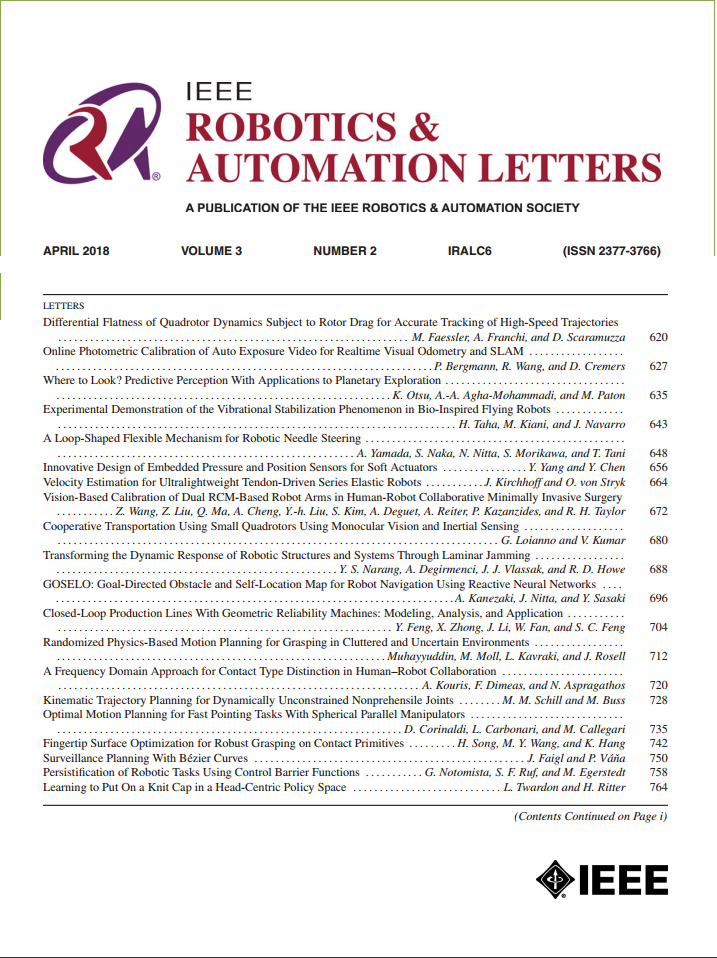Tree-Based Grafting Approach for Bidirectional Motion Planning With Local Subsets Optimization
IF 4.6
2区 计算机科学
Q2 ROBOTICS
引用次数: 0
Abstract
Bidirectional motion planning often reduces planning time compared to its unidirectional counterparts. It requires connecting the forward and reverse search trees to form a continuous path. However, this process could fail and restart the asymmetric bidirectional search due to the limitations of lazy-reverse search. To address this challenge, we propose Greedy GuILD Grafting Trees (G3T*), a novel path planner that grafts invalid edge connections at both ends to re-establish tree-based connectivity, enabling rapid path convergence. G3T* employs a greedy approach using the minimum Lebesgue measure of guided incremental local densification (GuILD) subsets to optimize paths efficiently. Furthermore, G3T* dynamically adjusts the sampling distribution between the informed set and GuILD subsets based on historical and current cost improvements, ensuring asymptotic optimality. These features enhance the forward search's growth towards the reverse tree, achieving faster convergence and lower solution costs. Benchmark experiments across dimensions from基于树的局部子集优化双向运动规划方法
与单向运动规划相比,双向运动规划通常可以减少规划时间。它需要将正向和反向搜索树连接起来,形成一个连续的路径。但是,由于惰性反向搜索的限制,此过程可能失败并重新启动非对称双向搜索。为了解决这一挑战,我们提出了贪婪公会嫁接树(G3T*),这是一种新的路径规划器,它在两端嫁接无效的边缘连接以重新建立基于树的连接,从而实现快速的路径收敛。G3T*采用贪心方法,利用引导增量局部密度(GuILD)子集的最小勒贝格度量来有效地优化路径。此外,G3T*根据历史和当前的成本改进动态调整信息集和GuILD子集之间的抽样分布,确保了渐近最优性。这些特征增强了正向搜索向反向树的增长,实现了更快的收敛速度和更低的求解成本。从$\mathbb {R}^{2}$到$\mathbb {R}^{8}$维度的基准测试和真实世界的机器人评估表明,与现有的基于单查询采样的规划器相比,G3T*具有优越的性能。
本文章由计算机程序翻译,如有差异,请以英文原文为准。
求助全文
约1分钟内获得全文
求助全文
来源期刊

IEEE Robotics and Automation Letters
Computer Science-Computer Science Applications
CiteScore
9.60
自引率
15.40%
发文量
1428
期刊介绍:
The scope of this journal is to publish peer-reviewed articles that provide a timely and concise account of innovative research ideas and application results, reporting significant theoretical findings and application case studies in areas of robotics and automation.
 求助内容:
求助内容: 应助结果提醒方式:
应助结果提醒方式:


